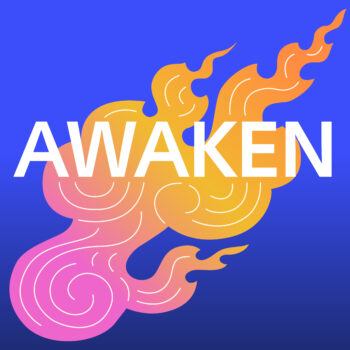
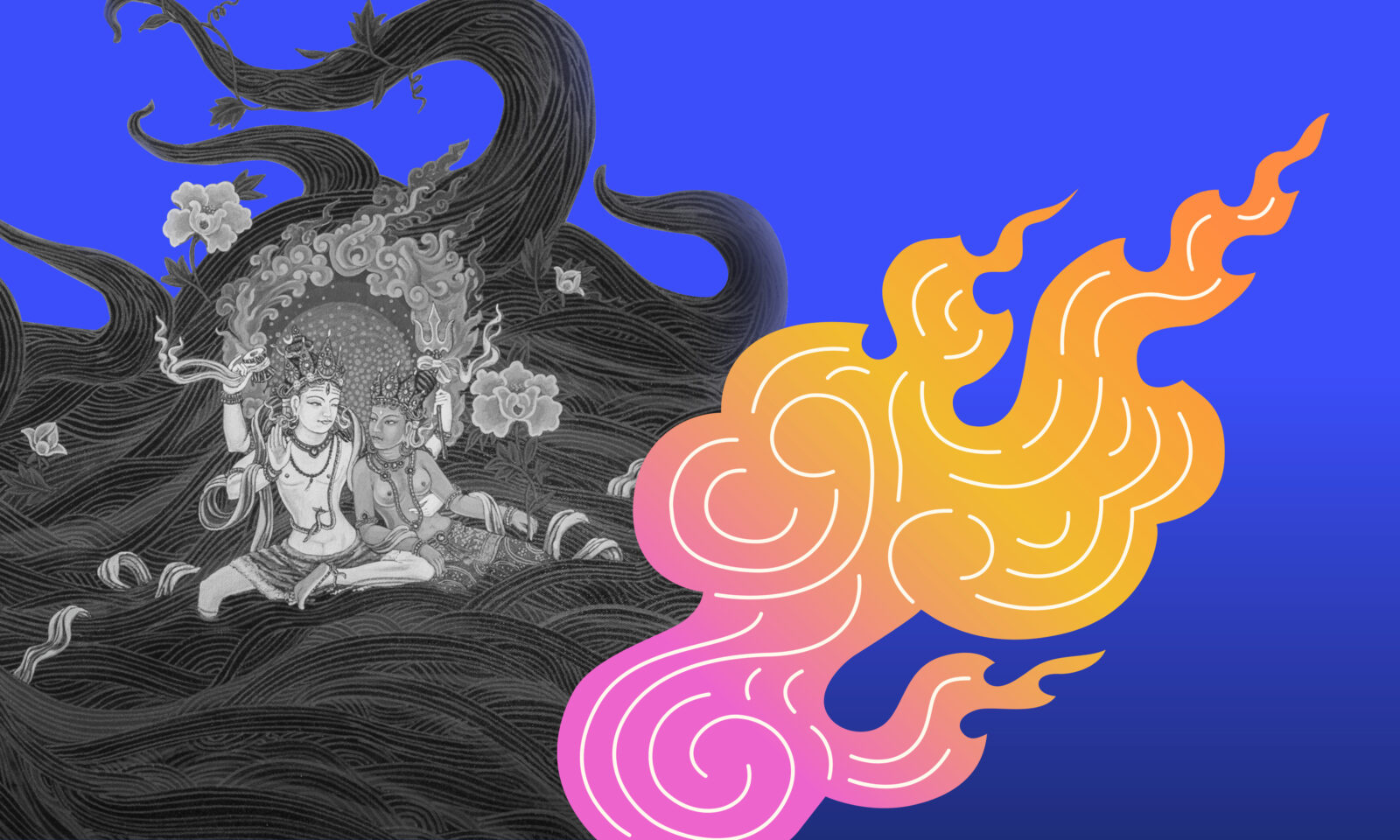
Tashi Chodron:
ཆགས་པ་རྣམས་ལས་མྱན་ངན་སྐྱེ།
ཆགས་པ་རྣམས་ལས་འཇིགས་པ་སྐྱེ།
ཆགས་པ་རྣམས་ནི་སྤངས་བྱས་ན།
མྱ་ངན་མེད་ཅིང་འཇིགས་པ་མེད།
Isabella Rossellini:
“From attachment springs grief
From attachment springs fear
For him who is free from attachment There is no grief or fear.”
Dr. Richie Davidson:
Attachment is operating from a place where your self-identity is somehow tied up with some object or person, and when you are therefore in the absence of this, you crave it.
Eve Ekman:
And actually in Buddhism there are these kind of four different types of attachment or clinging. One of them is our clinging to sense pleasures, which I know so well.
Tenzin Wangyal Rinpoche:
It’s a question about what kind of attachment, what degree of attachment, what the purpose of the attachment is, how constructive and destructive the attachment is. These are I think more important questions
Isabella Rossellini:
Welcome to season 4 of AWAKEN, a podcast from the Rubin Museum of Himalayan Art about the dynamic path to enlightenment and what it means to “wake up.” I am Isabella Rossellini, an actress and activist and your host for this season of AWAKEN, where we are exploring a fundamental concept in Buddhist thinking and philosophy: attachment.
Himalayan art has long been a pathway to insights and awakening, and in this season, we will look at objects from the Rubin’s collection as a way to better understand attachment and its counterpoint, non-attachment, which translates to openness, or seeing things as they truly are. With stories and wisdom from artists, writers, poets, Buddhist teachers, psychologists, scholars, and others we will explore the meaning of attachment and how it shows up in different parts of our lives.
The Rubin has been working with this principle of attachment and non-attachment quite a bit lately. In October 2024, the Museum let go of its physical space in New York City, where it had welcomed visitors for 20 years. The Rubin made this transition into a global museum in order to share the beauty and richness of Himalayan art and cultures with even more people around the world. In doing so Rubin staff and visitors had to ask what happens when you let go of attachments to the way things are or expectations of how things should be? What kinds of opportunities can that open up and allow for?
To understand non-attachment, we first have to understand attachment: And what better way to start our exploration of attachment than through the universal experience of wanting something you cannot have.
Contemplative social scientist, Eve Ekman.
Eve Ekman:
Currently in San Francisco there’s no surf, far too much wind. There’s been no surf for five days. there’ll probably be no good surf for another five days and I feel the pain of sense pleasure craving. I just want this thing that I enjoy and makes me feel good and in its absence I both feel tight and unhappy. And then I think about Santa Cruz which is an hour and a half south of us, in which they’re protected from the wind and they have surf, and I feel both envious and angry, all this that comes up with sense pleasure and its instability.
Dr. Richie Davidson:
Craving and attachment are often used synonymously. You can think of craving as arising as a consequence of attachment.
Isabella Rossellini:
Psychologist Dr. Richie Davidson, founder and director of the Center for Healthy Minds, University of Wisconsin-Madison, and founder and chief visionary for Healthy Minds Innovations, Inc.
Dr. Richie Davidson:
It’s basically predicated on the delusion that our well-being and happiness can be due to some external circumstance or person. Or, to put in another way, that our well-being and happiness depends upon the object of one’s attachment.
Isabella Rossellini:
Jenny Odell, artist and author of How to Do Nothing and Saving Time: Discovering Life Beyond the Clock
Jenny Odell:
When I hear attachment, I kind of think of that kind of attitude of expecting to be able to grasp something very quickly or needing to feel like you grasp it and in so doing kind of foreclosing the opportunity to actually perceive more of what’s there in reality.
Annabella Pitkin:
It’s a kind of hunger. It’s often characterized in Buddhist literature and poetry as having the same kind of feeling as fire. It feels burning and hot and painful, and it kind of scorches you.
Isabella Rossellini:
Annabella Pitkin is a scholar of Tibetan Buddhism at Lehigh University. She is also the author of Renunciation and Longing: The Life of a 20th Century Himalayan Buddhist Saint.
Annabella Pitkin:
Another really intense metaphor that comes from the Tibetan tradition is the idea that it’s like a sharp edge, like a shard of glass, or the edge of a razor blade. And you, you know, Rinpoche, the great 19th century Tibetan meditator and teacher, says that when we crave and seek out pleasure with the mental attitude of this addictive grasping, it’s very much like if there was a lump of honey on a razor blade, you could put that on your tongue, and you would taste the honey that would be there, but you would be cutting yourself. It would be pain at the same time.
Eve Ekman:
There’s just such a beauty and eloquence of understanding why we want to have this non-attached or non clinging state so we can be free at the deepest level.
Jenny Odell:
I think when you’re in a state of attachment to, let’s say your ego, it feels like the most terrifying thing in the world to release your grip even a little bit. Like, nothing could be worse than that, and it’s almost like your whole being is geared towards maintaining this hold. But then when you do, whether by design or by accident, but when somehow you get out of that, it’s always such a relief.
Eve Ekman:
Then there is also the kind of clinging we have to our view of the world. I’m an American and it’s a great country, right? That could be one view of the world and we get so fixated on it we can’t take in new information. We can’t have a nuanced understanding. And that creates pain because then we can’t hear or see others.
Isabella Rossellini:
That inability to hear or see others is isolating and is one of the consequences of attachment, you feel more alone, less connected. People clinging to their own opinions and views is nothing new. It requires a focus on the self and the needs of the self, which is another fundamental part of attachment. And that focus is limited. But when we open our mind away from the me and mine, things start to shift.
Teacher and meditation master in the Bon Buddhist tradition Tenzin Wangyal Rinpoche.
Tenzin Wangyal Rinpoche:
When you have identity is more collective—it’s always about us, our problem, our wellbeing, our happiness, a journey is about our journey—it becomes more constructive.
Eve Ekman:
Then, there’s another that the Buddha brings up that we can cling to certain rights and rituals that we believe will actually be the source of our liberation. We could consider this desire for this kind of quantified self. If I measure every calorie in, if I know every single factor that relates to my sleep or my nutrition I will find true happiness through quantifying everything that goes into my body and out of my body. It’s a fantasy. The external form body is not our entire experience. There’s consciousness and mind. Then the last is this kind of self-clinging. Identification with our self and ideas of who we are.
Dr. Richie Davidson:
The way this translates is people think that getting the next car, or a new home, or some new package from Amazon will somehow make them happy. According to the Buddhist understanding, that’s an illusion or delusion. Actually, the science very much is consistent with the Buddhist view and shows that, in fact, enduring happiness is not fundamentally associated with these external objects. They can come and go, and our happiness is really not dependent on it. It may produce transient fluctuations in happiness, but there is a very well-known phenomenon in psychology and economics that is called “the hedonic treadmill.”
Basically, what the hedonic treadmill says is that you adapt. You may get something new that’s really cool, and you may experience some blip in your happiness, but it quickly subsides, even if what you receive is massive, like winning the lottery and going from being an average middle-class, or even lower middle-class person, to a centimillionaire, or even more. Long-term follow-up studies of lottery winners show that they’re not any happier. In fact, some get worse.
Ocean Vuong:
It’s most useful as a realization of change, that there is no benefit to hold on to wind.
Isabella Rossellini:
Writer, professor, and photographer Ocean Vuong, whose novel, On Earth We’re Briefly Gorgeous, won the AmericanBook Award.
Ocean Vuong:
Wind, of course, is difficult to hold on to, if at all, but what Buddhism often reminds, at least, me is that everything is wind. This desk is wind, it’s just a slower wind. It’s a wind with more illusions around it, but same as feelings: anger, joy, ecstasy, love. All that is wind, so if we grasp at it, it’s like running out into a storm and trying to hold on to the wind. You lose yourself. It’s exhausting, and you come back with nothing. So, that has been such an edifying way to not only make art, but to live; to realize that to attach is to be swept away.
So you say, “Okay, I’m a novelist.” Well, what is a novelist? “I’m an artist. I’m a thinker. I’m a writer.” And then you get into that delusional, reductive idea of that, and then it starts to trap you. You start to try to satisfy the notion rather than use it to break out of certain things.
Isabella Rossellini:
The idea that we get stuck in ideas of who we are extends to how we think things should be. So much of our judgment of ourself and others is based on these ideas we have become attached to. But what happens when we let go?
Jenny Odell explores this question through the concept of deep listening, which was developed by the composer Paulina Oliveros.
Jenny Odell:
Her description of deep listening, which sounds a lot like a nonattachment, is being extremely open to listening to everything that’s happening inwardly and outwardly. And she says that it’s necessary to practice doing this because our culture privileges analysis and judgment, and I would add maybe snap judgment.
I’m trying to carry out that same operation, where I want to break someone free from some unquestioned ways of looking at things, or assumptions, or patterns of noticing, maybe.
Ocean Vuong:
Expertise is the first killer of innovation. And you start to believe, again, these terms. You believe that, “I am a professor. I am an expert. And then slowly you start to—after several years, you might turn into a rock. Everything calcifies.
Jenny Odell:
A couple times a year, I will go up to the Santa Cruz Mountains and for many reasons, it’s much easier to let go of things or let other things in when I’m up there.
And that’s something that I really aspire to as a writer. It’s what I’m trying to do with my writing, which is very much not tell people what to do, or give advice, which is frustrating for some people.
Tenzin Wangyal Rinpoche:
The reason why you have attachment—because we are disconnected. We are lost in some sense. We are all lost in different degrees.
Isabella Rossellini:
Here’s Tenzin Wangyal Rinpoche on samsara, the endless cycle of life, death, and rebirth.
Tenzin Wangyal Rinpoche:
The moment you are born in the samsara, the moment you are identified, qualified, samsaric beings, you are already qualified—this notion of you have—lost. How badly you are lost is the question. So when you are lost, you have to identify with some thing, already, and that is the beginning of attachment. So when you identify—either saying “I am”—something—that’s also attachment.
Ocean Vuong:
And this is where actually Buddhism and queerness really align, because often the great promise of queerness is elision, to slip out of the containers constantly.
Isabella Rossellini:
Ocean Vuong suggests that queerness also invites a form of opening up: What happens when we don’t love whom we’re expected to love or identify in ways we’re expected to identify?
Ocean Vuong:
I think it was Muñoz who says, “Queerness, if it is defined successfully, then it’s no longer queer.” If you have to define it with a fixed definition, then it’s no longer queer. And similarly, what is a partner? What are the shared roles that we have to dismantle and make anew? And because there are no heteronormative models for us, we are much more malleable. It’s very Buddhist; it’s very eastern; it’s very wu wei, as the Chinese would say. We flow where the river slopes, and then we crash where the river cuts off into a waterfall, and we swerve when it needs to swerve.
We adjust without having to redo our understanding of who we are as fixed labels in society, because society never really gave us those things. So, what was that first deprivation became, actually, ultimate liberation.
Isabella Rossellini:
For the final exhibition in the New York City space, the Rubin invited over 30 artists from Himalayan and Asian regions and the diaspora to exhibit their work in dialogue with objects from the Rubin’s collection. These artists are letting go of preconceived notions of how things should be and reimagining art forms, cultural ideas, and beliefs. Nepalese artist Prithvi Shrestha’s painting titled Attachment, is featured in the exhibition. Attachment is an exploration of the interconnectedness of things he is attached to, including his wife, nature, culture, religion, and technology.”
Annabella Pitkin also shared her thoughts about the painting. Before listening to her description, take a moment to look at the work on rubinmuseum.org/awaken. You may even recognize one detail from the painting, as it was featured on the 2024 cover of the Rubin’s annual Spiral magazine.
Annabella Pitkin:
In this painting, we see three figures against what is a kind of lavender-gray background. We see what looks like the head of a man with a shaven head hanging down from the top of the image.
And we see a figure that might be a woman with blue skin, and streaming black hair, and flowers, and the hint of a golden halo behind her head. And then in her hair, we see very small two deities in a Himalayan artistic style, with a halo around the two of them. One deity is white-skinned, one deity is red-skinned, and they’re embracing, and sitting side by side, and there’s some flowers as well around them. And there’s a kind of sprinkling of gold around the shaven-headed figure who’s hanging down, almost evoking some sort of energy fields, when I look at it. And so what I see in this image is, first of all, it’s very, very beautiful. There is a great pleasure in looking at it. It’s, at least for me, it gives me a lot of pleasure to see it.
The—there’s a kind of dynamism and motion in the female figure in her hair, almost like a wind is blowing, and the hair is streaming, and tendrils are flying. And the deities are kind of serene in this hair. But there’s a little kind of wind at the top of their halo that’s blowing the radiance of the halo along with the hair. And then the blue-skinned female figure and the pinkish-brown head of the shaven-headed figure that’s hanging down, they’re quite still.
Prithvi Shrestha:
I have connected the hair to life itself, illustrating how it flows with all the ups and downs of our life, happiness, and pain alike.
Isabella Rossellini:
Prithvi Shrestha.
Prithvi Shrestha:
We are constantly flowing with time.
Annabella Pitkin:
There’s this use of space. There’s this use of color. And there’s this mixing of artistic vocabularies, very, very precise realism, gestures at the realism of a kind of photorealism style, and then elements of Himalayan iconography, like the halos and the deities.
And the way that that speaks to me, thinking about non-attachment and attachment, is that pleasure and intimacy, like the two deities side by side, are such delicate spaces for humans and for all of us. They’re the most cherished kind of tender and longed-for experiences of our lives. We long for intimacy. We long for love and connection. We long for relationships, and we long for pleasure and beauty. And I heard a Tibetan Buddhist teacher, the late Gelek Rinpoche [sp] talk about this at one time. And he mentioned that there’s often the assumption that the longing for happiness and pleasure and love is somehow a kind of attachment that is, you know, to be avoided.
And he said, another way to think about it is that that longing for beauty and pleasure and connection and intimacy, that is a mark of our sanity, actually, it’s a mark of our good health. We should want those things. It orients us towards what is best. And it, ultimately, for a Buddhist, orients people towards Buddhahood, because that would be the ultimate aspect of that. And so here I see the artist working with the complications of what does that mean though in a marriage, in a family with children, with partners, with shopping? How do we navigate what’s liberating and what’s constraining in our pleasures, and our longing for pleasure? And how do we celebrate the joy and power of our pleasure, and our longing for pleasure?
Isabella Rossellini:
That is the ultimate question: How can we celebrate pleasure, love, joy, without holding on to it too tightly, without it being the foundation of our well-being. We will explore this in the upcoming episodes. Of course, the path to non-attachment takes a lifetime, or more, but in this series, we’ll look at ways of tapping into non-attachment in our day to day lives.
You just heard the voices of Dr. Richie Davidson, Eve Ekman, Jenny Odell, Annabella Pitkin, Tenzin Wangyal Rinpoche, Prithvi Shrestha, and Ocean Vuong. I am Isabella Rossellini, your host.
To see the artwork discussed in this episode, go to rubinmuseum.org/awaken.
If you’re enjoying the podcast, leave us a review wherever you listen to podcasts, and tell your friends. For more stories and news from the Rubin, follow us on Instagram @rubinmuseum and sign up for our newsletter at rubinmuseum.org.
AWAKEN Season 4 is an eight-part series from the Rubin.
AWAKEN is produced by the Rubin Museum of Himalayan Art with Tenzin Gelek, Jamie Lawyer, Kimon Keramidas, Gracie Marotta, Christina Watson, and Sarah Zabrodski in collaboration with SOUND MADE PUBLIC, including Tania Ketenjian, Philip Wood, Alessandro Santoro, and Jeremiah Moore.
Original music has been produced by Hannis Brown with additional music from Blue Dot Sessions.
AWAKEN Season 4 and Reimagine: Himalayan Art Now are supported by Bob and Lois Baylis, Barbara Bowman, Daphne Hoch Cunningham and John Cunningham, Noah P. Dorsky, Marina Abramović Institute (MAI), Mimi Gardner Gates, Fred Eychaner, Jacques and Natasha Gelman Foundation, Jack Lampl, Dan Gimbel of NEPC, LLC, Agnes Gund, New York Life, Matt and Ann Nimetz, Namita and Arun Saraf, The Prospect Hill Foundation, Eileen Caulfield Schwab, Taipei Cultural Center in New York, and UOVO.
This program is supported, in part, by public funds from the New York City Department of Cultural Affairs, in partnership with the City Council.
The Rubin Museum’s programs are made possible by the New York State Council on the Arts with the support of the Office of Governor Kathy Hochul and the New York State Legislature.
Reimagine: Himalayan Art Now is supported in part by the National Endowment for the Arts.
Thanks for listening.
To understand non-attachment, we first have to understand attachment. It’s a fundamental part of the human experience. We cling not only to what makes us feel good but also to our identities, beliefs, and expectations of how things should be. But how does attachment function in our lives? And how can bringing greater awareness to it help shift our perspective of ourselves and the world?
AWAKEN Season 4 is hosted by actress and filmmaker Isabella Rossellini. Guests featured in this episode include Founder and Director of the Center for Healthy Minds, University of Wisconsin-Madison, and Founder and Chief Visionary for Healthy Minds Innovations, Inc. Dr. Richie Davidson, contemplative social scientist Eve Ekman, artist and writer Jenny Odell, scholar of Tibetan Buddhism Annabella Pitkin, artist Prithvi Shrestha, teacher and meditation master in the Bon Buddhist tradition Tenzin Wangyal Rinpoche, and writer, professor, and photographer Ocean Vuong. The Tibetan at the start of the episode is spoken by Tashi Chodron.
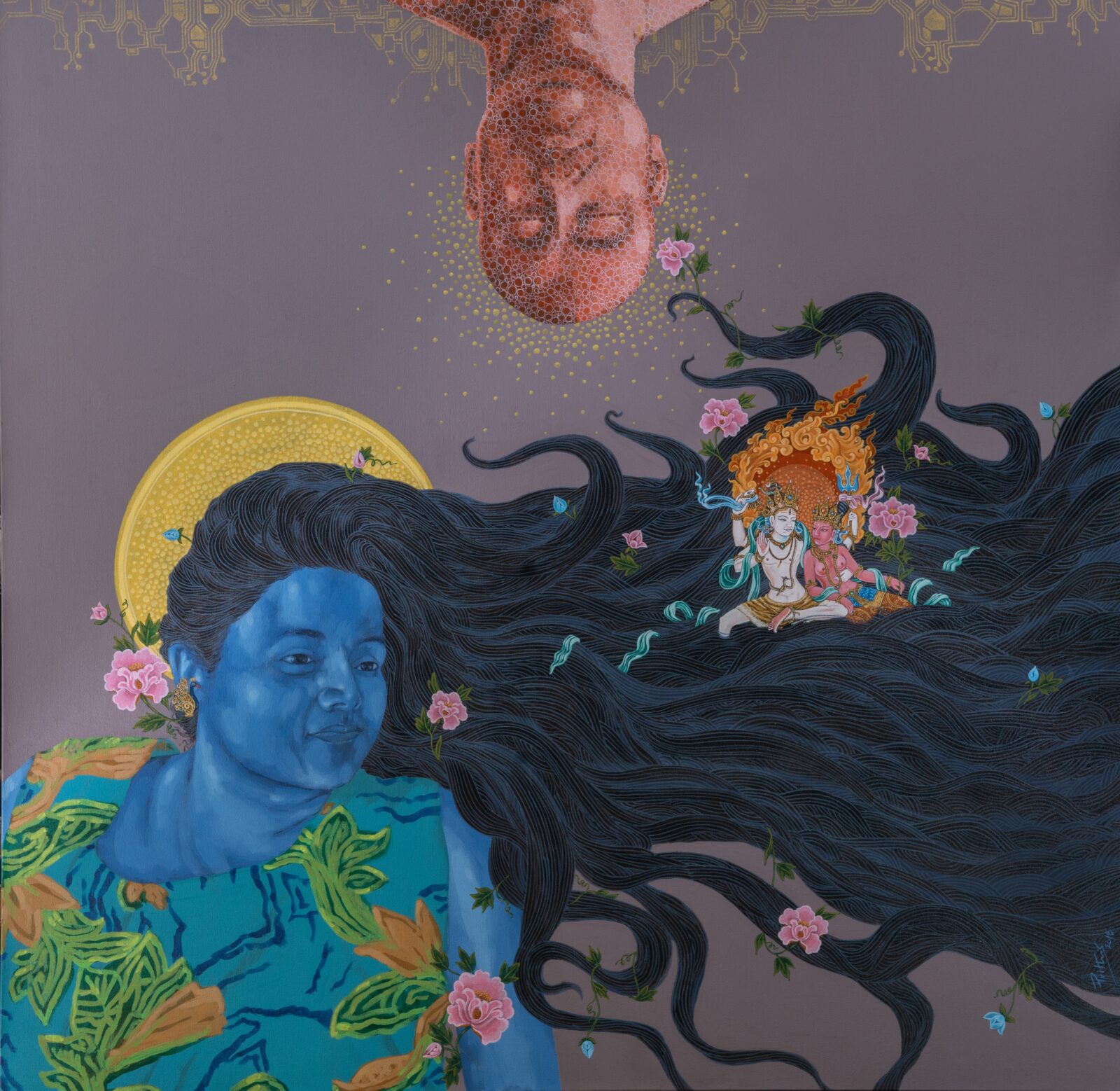
Prithvi Shrestha; Attachment; 2018; acrylic on canvas; courtesy of the artist; Photo by Dave De Armas
Attachment is an exploration of the interconnectedness of things Prithvi Shrestha attached to, including his wife, nature, culture, religion, and technology. Prithvi’s artwork speaks about ordinary people’s feelings of attachment to the important things in their lives.
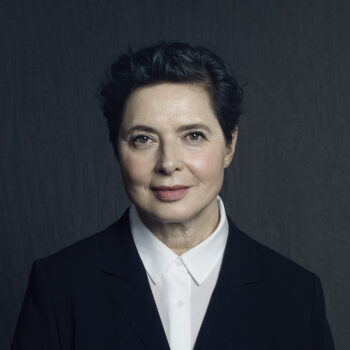
Isabella Rossellini grew up in Paris and Rome and is the daughter of actress Ingrid Bergman and director Roberto Rossellini. She started her career as a model, gracing the cover of over 500 magazines and representing the cosmetic line Lancôme for over 40 years. Rossellini made her cinematic debut as an actress in 1979 and has appeared in many films, including Blue Velvet, Wild at Heart, White Nights, Rodger Dodger, Cousins, Death Becomes Her, Fearless, Big Night, and Joy. She also lent her voice to the Disney-Pixar animated film The Incredibles.
Rossellini has a master’s degree in animal behavior and conservation and has received a PhD Honoris Causa from the science faculty at the University of Quebec at Montreal. She won several Webby awards for her short film series Green Porno, Seduce Me, and Mammas that offer comical and scientifically accurate insights into animal behavior. She also toured extensively worldwide with her theatrical monologues Green Porno and Link Link Circus.
Rossellini’s interests include the preservation of her family’s extraordinary cinematic heritage. She is the founder of Mama Farm, an organic farm in Brookhaven, NY.
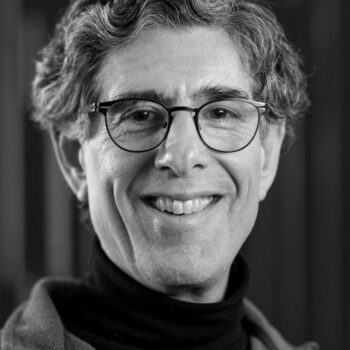
Richie Davidson is best known for his groundbreaking work studying emotion and the brain. A friend and confidante of the Dalai Lama, Time magazine named Dr. Davidson one of “The 100 Most Influential People in the World” in 2006. His research is broadly focused on the neural bases of emotion and emotional style, as well as methods to promote human flourishing; among these, meditation and related contemplative practices. He has conducted studies with individuals with emotional disorders such as mood and anxiety disorders and autism, as well as expert meditation practitioners with tens of thousands of hours of experience. His research uses a wide range of methods including different varieties of MRI, positron emission tomography, electroencephalography, and modern genetic and epigenetic methods. Dr. Davidson is the William James and Vilas Professor of Psychology and Psychiatry at the University of Wisconsin–Madison where he has been a faculty member since 1984. He is the founder of Healthy Minds Innovations, Inc., an external, affiliated nonprofit dedicated to supporting the mission of the Center for Healthy Minds.
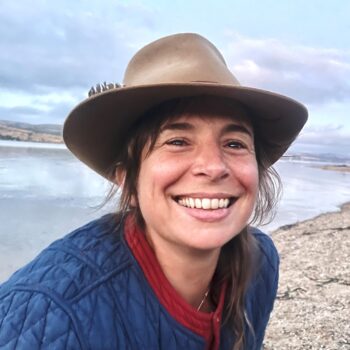
Eve Ekman PhD, MSW, is a contemplative social scientist designing, delivering and evaluating tools to support emotional awareness in the fields of health care, well-being, and technology. She draws from interdisciplinary skills and first-person experiential knowledge from clinical social work, integrative medicine, and contemplative science and meditation. Ekman was raised in San Francisco with a love of New York bagels and social justice action and is a cold water ocean enthusiast.
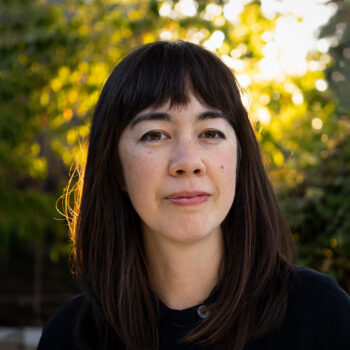
Jenny Odell is an Oakland-based artist and author of the books How to Do Nothing: Resisting the Attention Economy, Inhabiting the Negative Space, and Saving Time: Discovering a Life Beyond the Clock. Her other writing has appeared in the New York Times, Atlantic, and Paris Review, and her visual work has been exhibited in museums and galleries internationally. Odell has been an artist in residence at Recology SF (otherwise known as the dump), the Internet Archive, and the San Francisco Planning Department. Between 2013 and 2021, she taught studio art at Stanford University.
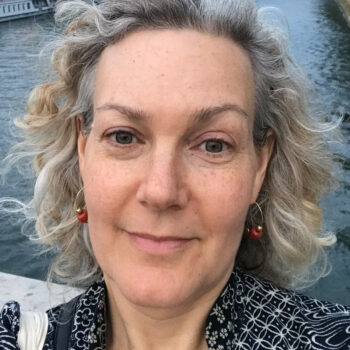
Annabella Pitkin is associate professor of Buddhism and East Asian religions at Lehigh University. Her research focuses on Tibetan Buddhist modernity, Buddhist ideals of renunciation, miracle narratives, and Buddhist biographies. She received her BA from Harvard University and PhD in religion from Columbia University. She is the author of Renunciation and Longing: The Life of a Twentieth-Century Himalayan Buddhist Saint, which explores themes of non-attachment and teacher-student relationship in the life of Khunu Lama Tenzin Gyaltsen. More →
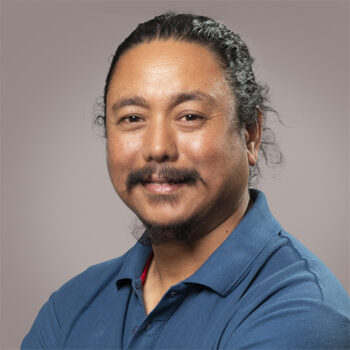
Prithvi Shrestha is a visual artist based in Lalitpur, Nepal. He draws inspiration from nature and his surroundings and aims to bridge the gap between the natural environment, technological progress, and human existence. His work looks into the interconnectedness of various elements in the universe, exploring the impact of technology on our sociocultural fabric. He has exhibited in five solo shows and has received several awards including The World Bank South Asia Region and the World Bank Art Program USA, Araniko Youth Award, and Himalayan Light Art Scholarship. Shrestha is the founder of Bindu, a space for artists.
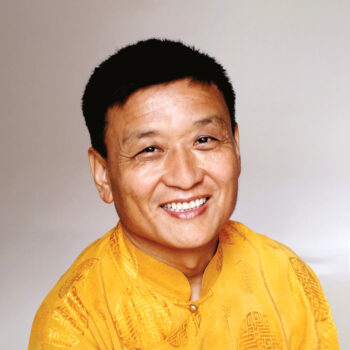
Geshe Tenzin Wangyal Rinpoche, the founder and spiritual director of Ligmincha International, is a respected and beloved teacher and meditation master in the Bon Buddhist tradition of Tibet. He has students in more than 25 countries, teaches around the world, and reaches thousands of students through his online programs. Trained as a Bon monk, Rinpoche now lives as a householder, allowing him to more fully relate to the needs and concerns of his students. Known for the depth of his wisdom and his unshakeable commitment to helping students recognize their true nature, he is the author of ten books, including Wonders of the Natural Mind and the Tibetan Yogas of Dream and Sleep.
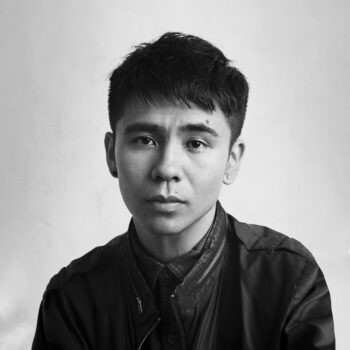
Ocean Vuong is a writer, professor, and photographer and the author of On Earth We’re Briefly Gorgeous, winner of the American Book Award and The Mark Twain Award. The novel debuted for six weeks on the New York Times bestseller list and has since sold more than a million copies in 40 languages. A nominee for the National Book Award and a recipient of a MacArthur “Genius” Grant, he is also the author of the poetry collections Time is a Mother, a finalist for the Griffin prize, and Night Sky with Exit Wounds, a New York Times Top 10 Book and winner of the T. S. Eliot Prize. Born in Saigon, Vietnam, and raised in Hartford, Connecticut, in a working-class family of nail salon and factory laborers, he currently splits his time between Northampton, Massachusetts, and New York City, where he serves as a professor in modern poetry and poetics in the MFA Program at New York University.
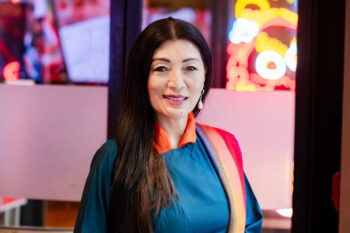
Tashi Chodron is the Himalayan programs and communities ambassador at the Rubin Museum of Himalayan Art.
Get the latest news and stories from the Rubin, plus occasional information on how to support our work.